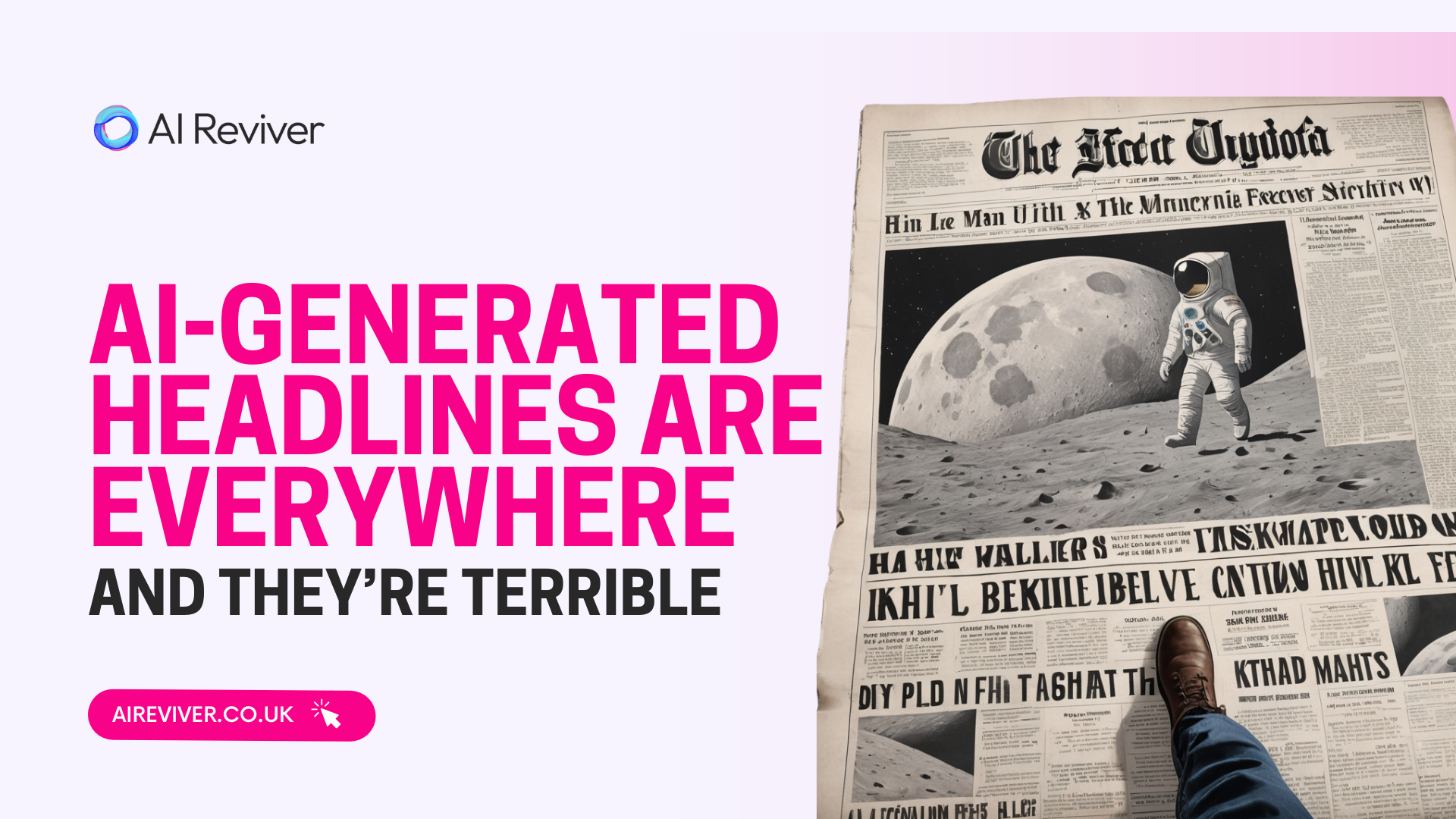
“This Revolutionary Breakfast Cereal Will Change Your Life Forever.” That’s the headline you’ll click on, only to find out it’s a mundane article about a new whole-grain cereal a brand is pushing out to its audience. Did it change your life? Nope. Did it waste your time? Yes, and then some.
The world of AI-generated headlines is riddled with exaggerated claims and sensationalist titles that’ll embellish the most boring pieces of writing that don’t offer up any valuable information. They prioritize clicks over clarity and engagement over substance and are the trigger behind most bloggers’ existentialist crises.
The Most Utilized AI Content
While AI promises valuable benefits in the world of medicine and engineering, they fail us when it comes to interesting writing. Even when media organizations invest in real human writers, they’ll often rely heavily on AI doing the headline writing, and understandably so.
As the new generation’s attention span decreases and media organizations lose their budget, it only makes sense that they try to find the time to cut corners and make their process faster. They need more clicks and engagement as they try to produce content faster, and AI is the perfect tool for that.
The problem is, of course, that AI-generated headlines not only threaten the quality of their work but also, at times, decrease their trustworthiness, especially if the article isn’t worthy of the aggressive headline.
Where Did AI Headlines Go Wrong?
While AI systems excel at pattern recognition, they don’t do the human stuff too well, such as things like nuance and local context. They give you some rich insights on what keywords to use to get your website some clicks, but then they leave out all the cultural references or emotional undertones that skilled writers would decorate their titles with. The heart of your story? Gone, reduced to a sensationalist SEO mess.
Take the headline “This Simple Trick Will Make You A Billionaire Overnight.” You might’ve prompted your AI to give you a headline about tips and tricks to save money, to title an article that’s about humble budgeting tips for the averagely-paid person.
The AI will take any class nuance out of what should be a more relatable subject, opting for the clicks of desperate internet users who will be disappointed to know that the trick is to put 10% of your salary aside each month.
The person who checked that article out will leave with a bad impression, given that your story was framed in a misleading way that was meant to generate an emotional response minus the substance.
The Template Has Gotten Old
The worst part is that so much of this sensationalist template is now used online, whether it be article titles or YouTube videos, that no one believes it anymore. You might trick your local boomer who wandered off on Facebook links, but it won’t get you the actual engagement for your younger audience.
It’s a predictable format: “X Things You Never Knew About Y” or “X Shocking Reasons Why [Basic Thing] Is Actually [Dramatic Claim].” Most experienced internet users know by now to avoid content that is titled in this way, knowing that the information presented in it won’t be anywhere near what it claims to be.
While these templates might perform well in analytics, they contribute to the current content fatigue we all know too well. I mean, we’re the BuzzFeed generation. We learned our lesson.
Why Humans Do It Better
Even the most experienced writers in newsrooms would often find it difficult to churn out a headline for their story. It’s actually more complex than it looks, especially if you’ve written a long and detailed account that has many layers to it. Trying to boil it down to 6-7 words to fit the newspaper’s layout is somewhat of a difficult task for writers who are used to descriptive paragraphs and plenty of space for context.
So back in the day, it would often come down to the editor of the website, magazine, paper, etc., to take their writer’s words and find a way to summarize them and get the point across.
This task requires so much mental maths: not only are you thinking about your specific paper’s audience and what they’re subscribed to you for, but you also need some knowledge of what ethical considerations to take if it’s a sensitive story. Headlines of articles everywhere are already being deemed biased and pushing an agenda: a fine line AI knows nothing about.
Sometimes, it also requires you to be witty and in with the times – for example, it might be a piece about tourism being on the rise in a certain city, while you know that Taylor Swift had just recently performed there. So you could come up with something like ‘Tourism in Albuquerque is on the Rise, and it’s Not Just Swifties!’. AI can never come up with that because it simply isn’t tuned in to the real on-the-ground talk of the town.
Snap Out of Click Bait, Try AI-Reviver
Whatever you might be selling or offering, you need content that resonates organically with your readers, as opposed to sneakily luring them in. Using a clickbaity headline on your title is similar to placing a giant 95% sale sign on your doors only for the customer to discover it’s only applicable to one item in your store. No one would ever come back.
You have to build trust with your audience – a brand that delivers what it says it does is one that you’ll find random people on TikTok doing free PR for.
In a world where unoriginal content floods our senses at every touchpoint, let your brand rise as an authentic voice in a sea of fake. Attract your audience because you’re real, and build that natural human connection with AI Reviver. We’ll get you on Google’s first page with pure human wit because you’re what they’re looking for; they just don’t know it yet.

